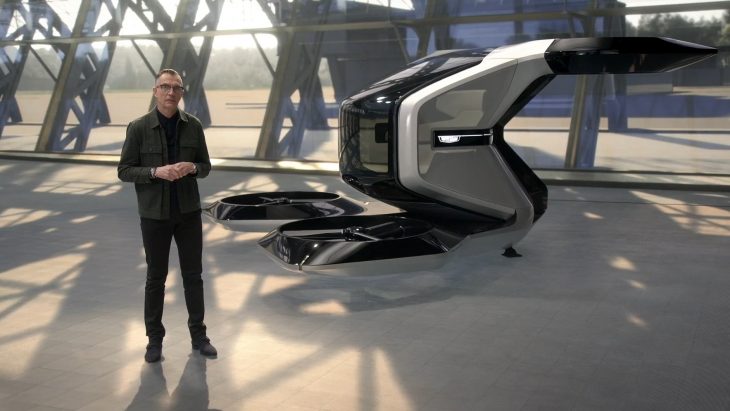
Growth coming in logistics business, too
WHEN IT COMES TO the future of travel, General Motors (GM) is looking skyward. At today’s GM Exhibit Zero virtual keynote at CES, the Detroit automaker unveiled a Cadillac single-seat concept air taxi that could make “personal air travel possible.” The futuristic-looking electric vertical take-off and landing (eVTOL) aircraft drone was shown in renderings and animations equipped with four rotors where it apparently could travel from rooftop to rooftop at speeds up to 56 mph.
While GM sees a future in aerial mobility, the remainder of the keynote by chair and CEO Mary Barra was firmly grounded on an electric future based on current research and developments. Barra outlined how the automaker is advancing in areas from battery capacity, new electric vehicles (EV) launches, and an e-commerce initiative called BrightDrop that could deliver your FedEx parcels. It’s all part of GM’s zero-crashes, zero-emissions and zero-congestion vision for an all-electric future.
With BrightDrop, GM wants to build an ecosystem of electric first-to-last-mile products, software and services to empower delivery and logistics companies to move goods more efficiently.
“BrightDrop offers a smarter way to deliver goods and services,” explained Barra. “We are building on our significant expertise in electrification, mobility applications, telematics and fleet management, with a new one-stop-shop solution for commercial customers to move goods in a better, more sustainable way.”
One may question why a car manufacturer is looking at getting into the logistics business. But GM envisions a huge opportunity as it estimates that by 2025, the combined market opportunity for parcel, food delivery and reverse logistics in the U.S. will be over $850 billion.
According to the World Economic Forum, demand for urban last-mile delivery, fueled by e-commerce, is expected to grow by 78% by 2030, leading to a 36% increase in delivery vehicles in the world’s top 100 cities. At the same time, this increase in demand is expected to cause delivery-related carbon emissions to rise by nearly one-third.
BrightDrop was born out of GM’s Global Innovation organization and joins the lineup of other recently launched Global Innovation startups, such as OnStar Insurance, OnStar Guardian and GM Defense. GM believes the new business lines will unlock areas of B2B, leverage its Ultium battery platform, and provide software and service opportunities.
It’s all part of GM’s overall goal to invest US$27 billion in EV and autonomous vehicle products, which includes the launch of 30 new EVs by 2025 said Barra. The company recently announced it will also invest US$1 billion in its Canadian operations to expand production of its highly profitable full-size pickup trucks to meet growing demand.
During the keynote GM also highlighted two new electric vehicle models, the Hummer EV and the Cadillac Lyriq that are being built on the Ultium battery system. The flexible system can boost power in future models by adding more battery modules, with vehicles able to travel up to 600 miles on a single charge claims Barra.
Barra began her keynote on a somber note as she looked back at the impact of the pandemic and racial tensions in 2020 on the U.S. that have “left us all tired and weary.” She wants 2020 to be a call to action going forward because the “health crisis, racial injustice, and climate change persist and so we must persist.”
“At General Motors our vision for the future is a world with zero crashes, zero emissions, and zero congestion. The key to unlock that vision she insists is electrification. The electrification of global transportation can help “reduce emissions and power the advanced systems in connectivity between vehicles and transportation infrastructure to help reduce congestion and crashes,” she added.



